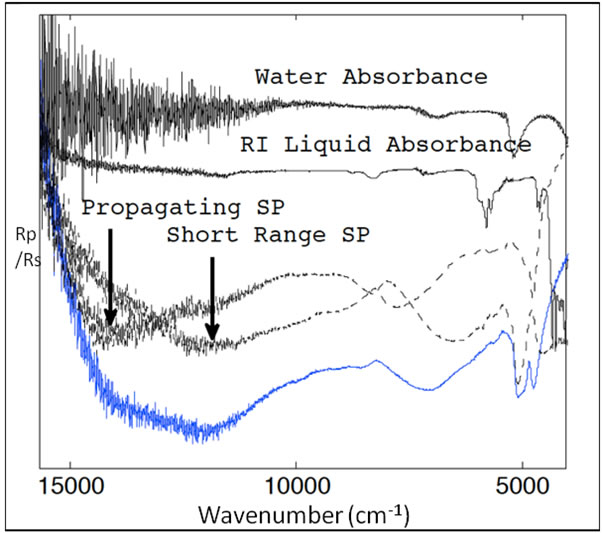Plasmonic substrates
The properties of ordered nanostructure and nanohole arrays include localized enhancement of plasmon intensity at discontinuities along the structures and tuning of the plasmon wavelength throughout the visible and near infrared regions. Additionally the propagation length of the plasmon is much shorter on these structures than on planar metals.
- Nanosphere lithography is employed to create and optimize ordered nanostructure arrays for SPR sensing applications.
- Scanning probe microscopy, visible spectroscopy, and infrared spectroscopy are among the methods used to characterize the surfaces
- The plasmonic structures are being applied to the detection of small molecules with the incorporation of molecular responsive polymers.
- The plasmonic structures are being integrated in lab-on-a-chip chemical sensors for improved accuracy and analyses in complex matrices.
Visable and Near-IR transmission spectra of nanohole arrays with increasing periodicity show a shift to longer wavelengths.

Ordered nanostructure arrays support multiple plasmonic modes, each with different frequencies and propagation lengths. The key is to select and tune the mode with the best properties for a particular application.


Photomediated catalysis of nanoparticles. Shining intense colored light during growth of nanoparticles affects the nanoparticle size and consequently the optical properties.

